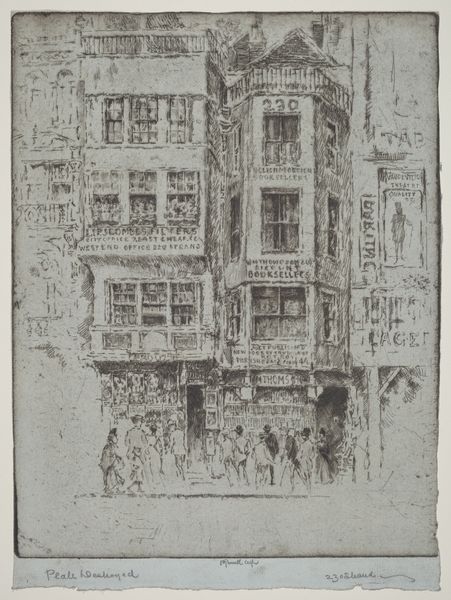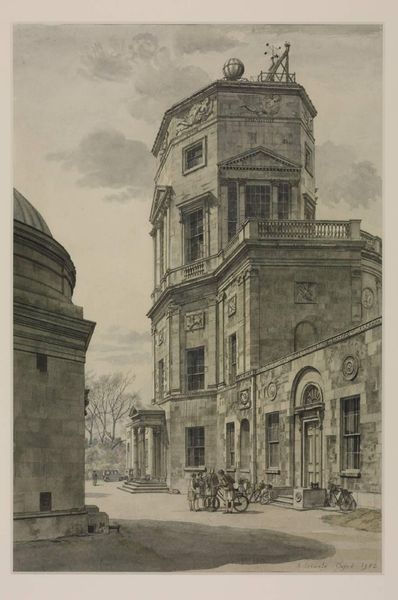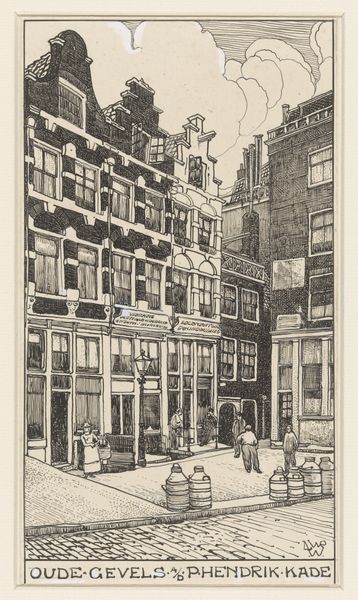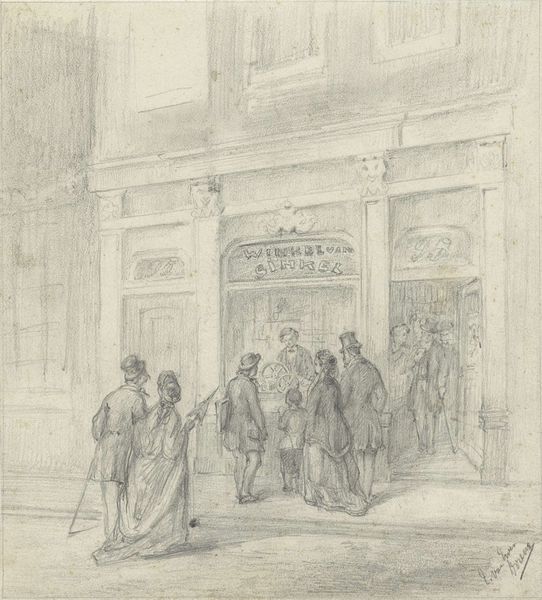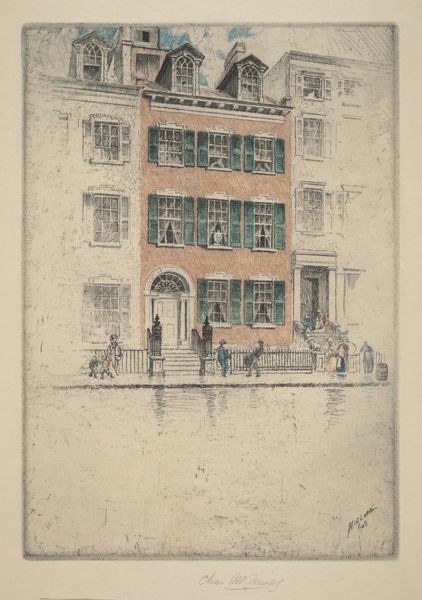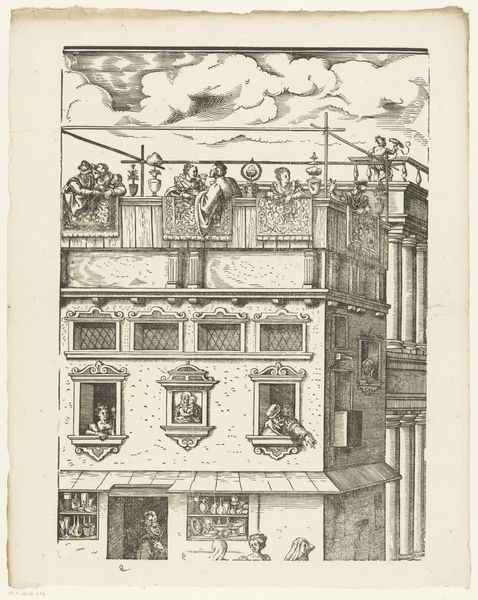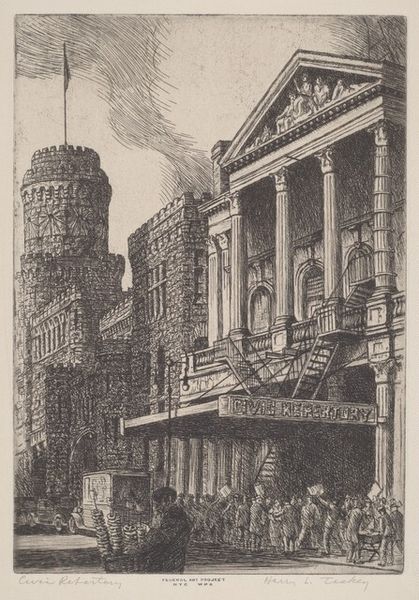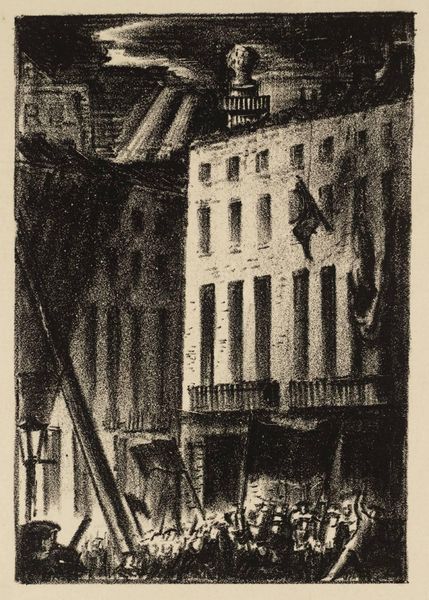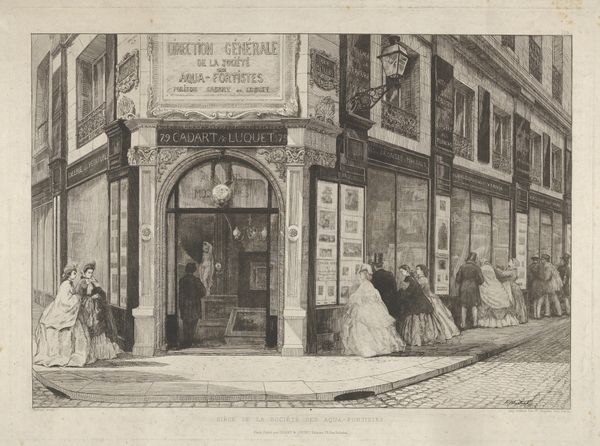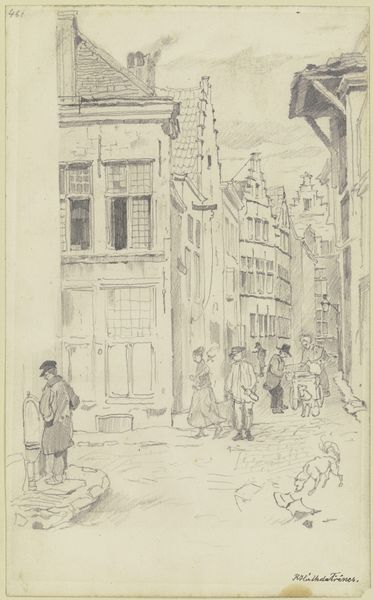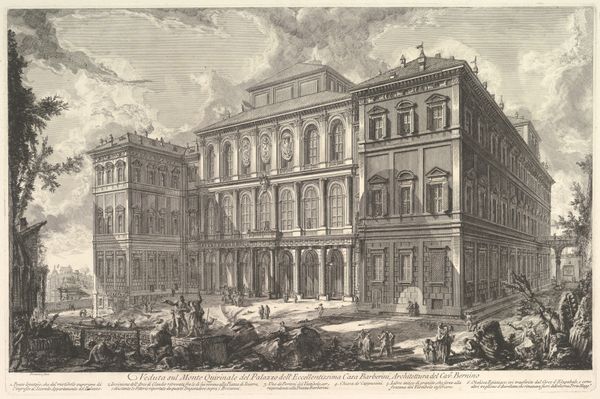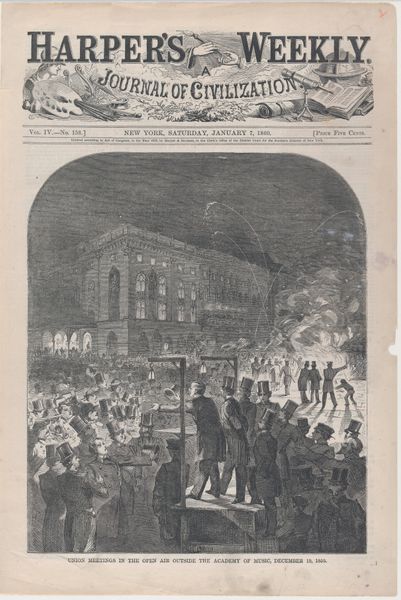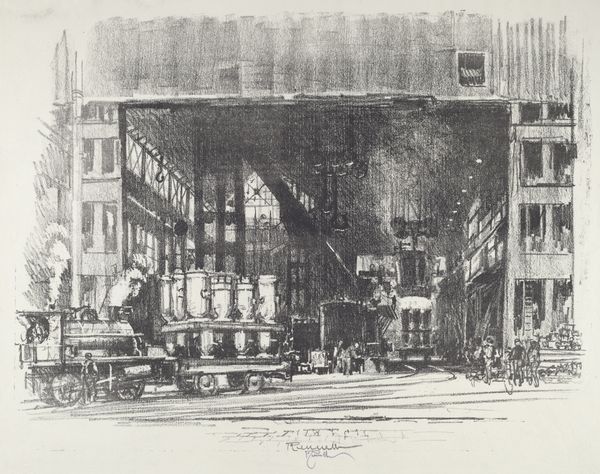
#
aged paper
#
mechanical pen drawing
#
old engraving style
#
sketch book
#
personal sketchbook
#
sketchwork
#
pen-ink sketch
#
pen work
#
storyboard and sketchbook work
#
columned text
Dimensions: height 180 mm, width 118 mm, height 392 mm, width 266 mm
Copyright: Rijks Museum: Open Domain
This print, "Au Bon Marché," by Smeeton-Tilly, captures the entrance to the famous Parisian department store. It’s made through a process called engraving, where lines are cut into a metal plate, inked, and then printed onto paper. Look closely, and you'll see the density of these lines creates the image, giving it a crisp, detailed texture. The print isn't just a picture; it's a window into the 19th-century world of consumerism. Notice how the architecture of the store is grand and inviting, designed to draw in shoppers. Engraving was often used for commercial purposes, like illustrating advertisements and catalogs, making luxury accessible through mass media. The careful work required to make this print underscores the value placed on skilled labor, even as industrialization was changing the landscape of production. By appreciating the craft involved, we can see how "high" and "low" art often share the same roots.
Comments
No comments
Be the first to comment and join the conversation on the ultimate creative platform.
